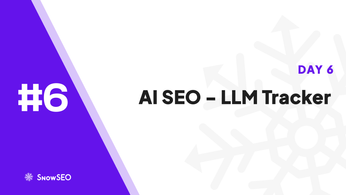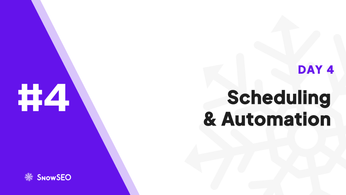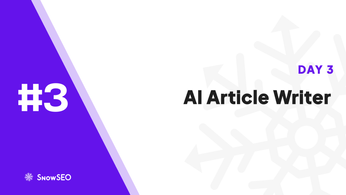
Master Content Gap Analysis in 6 Easy Steps
Table of Contents
Discover everything you need to know about mastering content gap analysis in six easy steps. In today’s digital landscape, ensuring comprehensive and unbiased information is crucial. However, many individuals and organizations struggle with identifying and addressing content gaps effectively. This guide provides practical solutions and expert insights to help you navigate this challenge. Based on industry best practices and expert analysis, we’ll explore how to systematically uncover and bridge content gaps, enhancing the quality and inclusivity of your information resources.
In today’s digital landscape, understanding and implementing effective Search Engine Optimization (SEO) strategies is crucial for online visibility. However, many organizations, including higher education institutions, face significant challenges in this area. A 2023 study by UPCEA and Search Influence revealed that 51% of surveyed institutions lacked an established SEO plan or strategy, highlighting a critical gap in their digital marketing efforts. (ewa.org)
Content gap analysis is a strategic approach to identify and address these deficiencies. By systematically evaluating existing content, organizations can uncover areas where their material falls short in meeting audience needs or aligning with SEO best practices. This process not only enhances content quality but also improves search engine rankings and user engagement.
In this article, we’ll explore six straightforward steps to master content gap analysis, providing you with the tools and insights needed to optimize your content strategy effectively.

Main Content
In the ever-evolving landscape of digital marketing, staying ahead requires a keen understanding of your content’s performance relative to competitors. Content gap analysis is a strategic approach that identifies missing or underperforming content areas, enabling businesses to enhance their online presence and engagement.
Understanding Content Gap Analysis
Content gap analysis involves evaluating existing content to uncover opportunities where your audience’s needs are unmet. This process helps in identifying topics that competitors cover but your content lacks, as well as areas where your content may be outdated or insufficient.
Key Benefits:
- Enhanced SEO Performance: By addressing content gaps, you can improve search engine rankings and visibility.
- Increased Audience Engagement: Providing comprehensive content that meets user intent fosters trust and loyalty.
- Competitive Advantage: Filling content voids positions your brand as an authoritative source in your industry.
How to Perform Content Gap Analysis
Conducting a content gap analysis involves several systematic steps:
- Identify Your Target Audience and Goals:Understand who your audience is and what information they seek. Align your content strategy with their needs and your business objectives.
- Audit Existing Content:Evaluate your current content inventory to assess its relevance, quality, and performance. This includes analyzing metrics such as page views, bounce rates, and conversion rates.
- Analyze Competitor Content:Examine competitors’ content to identify topics they cover that you don’t. This can reveal areas where you may be missing out on engaging potential customers.
- Identify Content Gaps:Compare your content with competitors to pinpoint missing topics or underdeveloped areas. Look for high-performing keywords and subjects that are relevant to your audience but not adequately addressed in your content.
- Develop a Content Strategy:Create a plan to address identified gaps by producing new content or updating existing material. Prioritize topics based on their potential impact and alignment with your goals.
- Monitor and Adjust:After implementing new content, monitor its performance using analytics tools. Be prepared to adjust your strategy based on what the data reveals about audience engagement and content effectiveness.
SEO Gap Analysis Tools
Utilizing specialized tools can streamline the content gap analysis process. These tools help in identifying keyword opportunities, analyzing competitor content, and tracking performance metrics.
Popular SEO Gap Analysis Tools:
- SEMrush: Offers a comprehensive suite for keyword research, competitor analysis, and content auditing.
- Ahrefs: Provides insights into competitors’ top-performing content and identifies keyword gaps.
- Moz: Features tools for site audits, keyword analysis, and tracking search engine rankings.
- Google Analytics: Helps monitor website traffic and user behavior to assess content performance.
Gap Analysis Example
To illustrate, consider a company specializing in eco-friendly products. Through content gap analysis, they discover that competitors have extensive content on sustainable living tips, while their own content focuses solely on product descriptions. By creating informative articles on eco-friendly lifestyles, they can attract a broader audience interested in sustainability, thereby filling the identified content gap.
Conclusion
Content gap analysis is a vital component of a robust digital marketing strategy. By systematically identifying and addressing content deficiencies, businesses can enhance their SEO performance, engage their target audience more effectively, and maintain a competitive edge in their industry.
Ready to master content gap analysis and boost your rankings? Start implementing these strategies today with SnowSEO. Our all-in-one platform automates keyword research, content generation, and competitor monitoring—making it easy to find and fill content gaps. Discover how SnowSEO’s AI-driven insights and seamless CMS integration can accelerate your organic growth. Visit snowseo.com and experience effortless, results-driven SEO tailored for both search engines and AI platforms.
Frequently Asked Questions
Q1: What is content gap analysis, and why is it important for SEO?
Content gap analysis is the process of identifying missing or underdeveloped topics on your website compared to competitors or audience needs. By pinpointing these gaps, you can create valuable content that attracts more visitors, improves search engine rankings, and meets user intent more effectively. This approach is crucial for SEO because search engines prioritize websites that offer comprehensive, relevant information. Filling these gaps helps you capture untapped keywords, address user questions, and position your site as an authoritative resource, driving both organic traffic and engagement. Ultimately, content gap analysis ensures your content strategy remains competitive and aligned with evolving audience interests.
Q2: How often should I perform a content gap analysis?
Ideally, you should conduct a content gap analysis at least twice a year, but the optimal frequency depends on your industry’s pace and content goals. Rapidly changing sectors or highly competitive niches may require quarterly reviews. Regular analysis allows you to stay ahead of trends, adapt to algorithm updates, and respond to shifting audience needs. Integrating content gap analysis into your ongoing content planning ensures you continuously identify opportunities, refine your strategy, and maintain a strong presence in search results. Consistency is key—frequent reviews lead to more proactive content development and better long-term SEO performance.
Conclusion
Mastering content gap analysis is crucial for enhancing the comprehensiveness and accuracy of information across platforms. By systematically identifying and addressing these gaps, we can ensure a more balanced representation of knowledge. For instance, studies have highlighted significant disparities in how topics are covered across different language editions of Wikipedia, underscoring the need for targeted interventions to bridge these gaps. (frontiersin.org)
Implementing the strategies discussed not only improves content quality but also promotes inclusivity and diversity. Research indicates that strategic interventions can effectively fill information gaps, leading to increased attention and engagement with the content. (insights.bu.edu)
Continuous improvement is essential; regularly revisiting and refining content ensures it remains relevant and comprehensive. By adopting these practices, we contribute to a more equitable and informed digital landscape.





